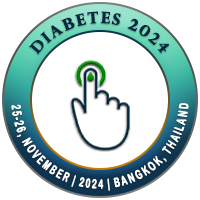
Patricio H. Contreras
Fundación Médica San Cristóbal, ChileTitle: Adrenalectomy in lipoatrophic diabetic subjects: A human case and a murine model (a-zip/f-1 mouse).
Abstract
A 16-year-old female teenager diagnosed with a severe Berardinelli-Seip syndrome had her
adrenals surgically removed in 1988 following a successful anti-glucocorticoid strategy with
mifepristone alone and in combination with ketoconazole. We presented this case at the 71st ES
Meeting in Seattle (Abstract 751,1989), and this author recently published it in full in 2022
(DOI:10.5772/intechopen.102986). There was a striking metabolic amelioration, particularly
with the one-week combined therapy. The patient gained 7 Kg and experienced complete
regression of her severe acanthosis nigricans and eruptive xanthomas. An OGTT performed two
weeks after surgery showed normal serum insulin levels, normal fasting serum glucose levels,
and a 2-h serum glucose value in the mild diabetic range. Fourteen years later, Haluzik et al.
(Diabetes 2002;51:2113) reported that the A-ZIP/F mouse (a non-leptin responding model of
murine lipoatrophy) showed an improvement in hepatic and muscle insulin sensitivity following
adrenalectomy. These results suggested that chronic elevation of serum corticosterone
contributes to diabetes in this hypoleptinemic mouse and that removing hypercorticosteronemia
improves tissue insulin sensitivity. So, both in a human case of lipoatrophy and in this murine
model of the disease, adrenal glucocorticoid removal induces a notorious amelioration of the
disease. Leptin is well known for its ability to restrain the adrenal axis. However, high serum
leptin levels are associated with reduced leptin action (leptin resistance). So, leptin resistance
might induce adrenal overactivity in obese and T2 diabetic subjects, leading to adipose insulin
resistance, excessive lipolysis, and liver and muscle steatosis. If this hypothesis is proven, we
predict a therapeutic role for the emerging, orally available, nonpeptide ACTH blockers (such as
Crinetic’s CRN04894) in treating these common diseases.
Biography
To be added

